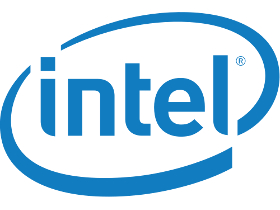Rumor: Xeon E7-v3 CPUs To Carry Up To 18 Cores
Looky here: a few new CPUs that are rumored to be coming soon with many cores and many GHz.
The folks over at CPU-World.com posted a list of specifications for some of the upcoming Xeon E7 series processors from Intel. The information was spotted in a CSV (Comma Separated Value) price list for the X-series server products from IBM, so considering this source, the information is likely quite reliable.
We don't normally like writing about rumors, but considering that we've been able to access the CSV file directly from IBM's servers here, it's difficult to let this one slide. The information was also available in the System x3850 X6 and x3950 X6 Types 3837 and 3839 Installation and Service Guide, which you can access here.
The CPUs are based on the Haswell architecture and are baked on the 22nm lithographic process. Therefore, we can expect tremendous performance at relatively low power consumption envelopes. Of course, you'd argue that a 165 W TDP for the most powerful models isn't "low," but if you consider that that's for a chip with a staggering 18 physical cores (36 logical cores with Hyperthreading enabled) running at 2.5 GHz, it really isn't bad.
Comparing these specifications to the similar models in the v2 family, the v3 units shown here appear to be what the Haswell-refresh CPUs were to the original Haswell chips -- a minor update that bumps the clock speeds, adjustments to the TDP, and a few other changes to the instruction sets.
| Model | # of Cores | Frequency | L3 cache | TDP |
| Xeon E7-4809 v3 | 8 | 2.0 GHz | 20 MB | 115W |
| Xeon E7-4820 v3 | 10 | 1.9 GHz | 25 MB | 115W |
| Xeon E7-4830 v3 | 12 | 2.1 GHz | 30 MB | 115W |
| Xeon E7-4850 v3 | 14 | 2.2 GHz | 35 MB | 115W |
| Xeon E7-8860 v3 | 16 | 2.2 GHz | 40 MB | 140W |
| Xeon E7-8867 v3 | 16 | 2.5 GHz | Row 6 - Cell 3 | 165W |
| Xeon E7-8870 v3 | 18 | 2.1 GHz | 45 MB | 140W |
| Xeon E7-8880 v3 | 18 | 2.3 GHz | 45 MB | 140W |
| Xeon E7-8880L v3 | 18 | 2.0 GHz | 45 MB | 115W |
| Xeon E7-8890 v3 | 18 | 2.5 GHz | 45 MB | 165W |
| Xeon E7-8891 v3 | 10 | 2.8 GHz | 45 MB | 165W |
| Xeon E7-8893 v3 | 4 | 3.2 GHz | 45 MB | 140W |
Table source: CPU-World.com
Core counts range from four through 18 cores, and frequencies range from 1.9 GHz through 3.2 GHz. Naturally, the variants with more cores operate at lower clock speeds, otherwise they wouldn't fit within the maximum TDP. Of course, different CPUs will work better or worse depending on the application. A heavily multi-threaded workload will benefit from the higher core count, while single-threaded loads will do better on a chip that features a higher clock speed.
You may wonder whether these chips can idle with low power requirements similar to consumer-grade Haswells, but it might not be a critical statistic. These processors are likely to be very expensive, and letting them idle is a waste of resources – companies will want them to be running as much as possible.
Get Tom's Hardware's best news and in-depth reviews, straight to your inbox.
Do note, these aren't intended for consumer use. They are meant for servers where they are used all the time, although they may also make their way into professional workstations for users that really need the power.
Keep in mind that this information has not been confirmed by Intel at this time. It may come from a source that appears to be reliable, but we can never be sure until we see an official announcement. Availability appears to be slated for Q2 2015, which is also unconfirmed.
Follow Niels Broekhuijsen @NBroekhuijsen. Follow us @tomshardware, on Facebook and on Google+.
Niels Broekhuijsen is a Contributing Writer for Tom's Hardware US. He reviews cases, water cooling and pc builds.
-
hannibal They don't have to... We need some very big player to compete Intel, and there is no one. Only Samsung seems to be big enough to compete Intel, and they are not in PC business, so 8 cores are going to cost more than 1000$ for long, long time...Reply -
dacquesta1 Faildroid, just because you don't need an 8-core chip doesn't mean other people don't need it. You obviously fail to understand the need for multiple cores. As to the 8-core cell phone CPU...do you have multiple apps running at the same time? I bet you do, so more threads means better multitasking. Think before you speak.Reply -
Chopper3 I don't see why this is news, there's been an 18-core (+HT) E5 available for months now, and at a lower TDP.Reply -
alidan ReplyAnd yet they still don't sell 8-core consumer chips for less than $1000. Thanks Intel.
Because you don't need it...just like you don't need a stupid 8 core cell phone CPU.
i render crap, i DO need more cores as almost all my applications work off multithreads, and if i put 12-16 cores to the task of rendering, i got 2 cores for general use so i could render 24/7 and not feel it. -
InvalidError Reply
Practically no mainstream software exists that can make reasonable use of more than two cores, so there really is no hurry for Intel to bother producing mainstream chips with more than four cores. Most applications people care about rely heavily on single-threaded performance and tuning CPUs for high single-threaded performance means giving up on extra cores.15281133 said:And yet they still don't sell 8-core consumer chips for less than $1000. Thanks Intel.
If you want more cores for a relatively small premium, you can bump it up to six with an i7-5820k without losing much single-threaded performance compared to the i7-4790k.
For those saying Intel is sitting on their laurels by letting performance stagnate for years, keep in mind that even though Intel has been stagnating, AMD has been failing to close the gap for years. If improving mainstream CPU performance beyond where it stands now was so easy, AMD should have at least caught up by now. -
dragonsqrrl Reply15281488 said:I don't see why this is news, there's been an 18-core (+HT) E5 available for months now, and at a lower TDP.
I think E7's tend to serve higher-end and higher processor count per node markets. They have a third QPI link and support for higher system memory capacities. Those are just about the only differences I'm aware of. They also typically support higher core counts, but I guess not this time around. -
dragonsqrrl Reply15281507 said:And yet they still don't sell 8-core consumer chips for less than $1000. Thanks Intel.
Because you don't need it...just like you don't need a stupid 8 core cell phone CPU.
i render crap, i DO need more cores as almost all my applications work off multithreads, and if i put 12-16 cores to the task of rendering, i got 2 cores for general use so i could render 24/7 and not feel it.
If you really do rely a lot on CPU rendering performance there are good alternatives in the Xeon lineup that actually make a lot more sense than going with Haswell-E i7's. There are even some dual processor options that will come in at around $500-$700 and outperform the 5960X by a good margin. -
RedJaron Reply
Exactly. Anyone who truly needs that many cores/threads should know they need a specialty machine, not a consumer model. The 5960X is limited to 64GB of non-ECC RAM. Many people who make their livelihood on rendering and number crunching will likely want more, especially ECC memory. You can get a Xeon E5 8C/16T for under $1000.15281678 said:If you really do rely a lot on CPU rendering performance there are good alternatives in the Xeon lineup that actually make a lot more sense than going with Haswell-E i7's. There are even some dual processor options that will come in at around $500-$700 and outperform the 5960X by a good margin.

